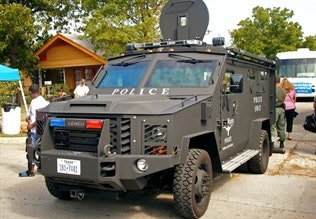 Flickr_CC: StevenM_61
Flickr_CC: StevenM_61
As 2011 comes to a close, this would be a good time to reflect on SWAT's past, present and future (apologies to Charles Dickens). While we can't accurately predict the future, we can trace the evolution of tactical units from yesteryear, understand today's challenged, and perhaps glimpse tomorrow's trend.
SWAT was born out of necessity in the 1960s to deal with deadly snipers. The twin catalysts were the widespread sniping during the 1965 Watts Riots in Los Angeles, and the 1966 tower sniper at the University of Texas.
LAPD's blueprint for Special Weapons and Tactics has revolutionized how law enforcement deals with high-risk incidents. SWAT accomplished this through extensive training, tactics, weaponry, tools and working as a cohesive team.
In the early years, SWAT wasn't well received in law enforcement. SWAT officers were often derided as unnecessary cowboys. As a result, few agencies initially adopted the concept. Many of the early SWAT teams lacked backing, weaponry, equipment, and training.
Over time, SWAT proved its worth by successfully handling the growing number of high-risk situations. Despite SWAT's successes, agencies were reluctant to accept the concept.
As the sniper threat faded in America, a new threat manifested—hostage barricades. This brought with it another new concept—Hostage/Crisis Negotiations (HNT/CNT). The early years of SWAT/CNT were often hallmarked by competitive animosity between the two entities. Over time, SWAT/CNT learned to work together to successfully resolve countless high-risk missions.
In the early to mid 1980s, the crack-cocaine crime tsunami swept across America's cities, bringing with it violence, shootings, fortified "rock houses" and heavily armed dealers who often outgunned police. Police turned to SWAT to take back the streets.
The '80s also saw the advent the threat of the active shooter (or active killer). The 1999 Columbine High School massacre forced SWAT to go back to the drawing board to deal with active shooters more effectively. The National Tactical Officers Association led a rethinking of active-shooter response that emphasized rapid response over "surround and call out."
This brings us to the present. Today, most law enforcement agencies have access to a SWAT team—either their own, a regional team, or mutual-aid response.
As you can tell, SWAT tactics are largely shaped in response to criminal activity. At the moment, SWAT leaders are comparing the risks of dynamic entry to "surround and call out" for search warrants.
SWAT teams are now busier than they've ever been. Simultaneously, the sour economy has devastated many agency budgets, resulting in a growing number of unit mergers and the formation of regional teams.
This is where the present meets SWAT's future. If the current economic downtrend holds, more SWAT teams will merge into regional units to spread costs, personnel, and resources.
SWAT tactics will undoubtedly continue to evolve. The deadly terror attacks in Mumbai and Beslan, Russia have added a terrifying new dimension to active-shooter response—squads of committed, organized, and heavily armed terrorists.
It's one thing for police first responders to take on a lone active shooter. It's entirely another for officers to take on a team of well-trained, heavily armed, determined terrorists, whose mission is to kill as many people until they're stopped.
Clearly, active shooters are here to stay. Terrorism looms large on America's horizon. The nightmare of a Mumbai or Beslan occurring in America is something law enforcement and SWAT especially need to actively prepare for.
By virtue of its training, tactics, weaponry, equipment, and experience, SWAT needs to lead the way for all of law enforcement in facing future threats in America.




















